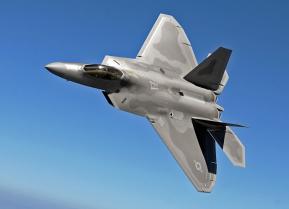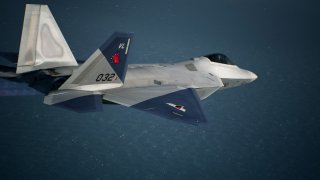F-22s and F-35s Have a Problem: Fighting Jointly and Staying Stealth
Can stealth fighters like the F-22 and F-35 stay stealthy and still fight jointly and share data?
With its supercruise speed, air-to-air maneuverability and dogfighting superiority, the F-22 Raptor is intended to support, fortify and fly alongside the F-35 JSF which can use its advanced sensors, computing and precision-weapons ability to, conversely, support F-22 missions. This synergy, considered fundamental to Air Force tactical air warfare thinking, would at least in large measure rely upon an ability for F-22s and F-35s to share information in real-time during combat.
Upon initial examination, such a prospect might seem technically quite difficult, given that the F-22 relies upon a datalink called Interflight Datalink and the F-35 operates with its own, fleet-wide common data link called Multi-Function Advanced Datalink, or MADL. However, until recently, two-way F-22 to F-35 data sharing has been strained, and not even fully possible due to a lack of datalink compatibility. The Air Force has now, for quite some time, been working on enabling both send and receive connectivity between the two 5th Gen jets using LINK 16.
This breakthrough, which has only recently been made possible by the Air Force, could for instance enable an F-35 to find enemy aircraft targets for an F-22 to attack. While making this possible is extremely significant when it comes to future warfare tactics, what if an RF data link such as LINK 16 compromised the stealth performance of F-22s and F-35s in combat by emitting a signature detectable to enemy radar.
Enter the XQ-58A
Given this, the Air Force and its industry partners are working on several ways to preserve stealth operations while still enabling data sharing between the aircraft. One possibility now being explored by the Air Force is to relay time-critical data between F-35s and F-22s through the use of a stealthy drone called the XQ-58A Valkyrie. The Air Force recently demonstrated this kind of aircraft-to-drone-to-aircraft connectivity using a new data gateway in testing, according to a report from The Drive’s WarZone.
Also, Northrop Grumman is now developing a new “radio translator” engineered to connect the F-22s Interflight Datalink with the F-35s MADL using software-defined radio hardware along with new software and antennas. The radio translator, Northrop Grumman developers tell The National Interest, is an integrated software-defined radio device called Freedom 550.
Software programmable radio works by sending IP packets of data through waveforms to transmit combat-relevant information. Northrop developers explain that there can be one multi-function box that does as many as twenty-five different functions. Stealth mode is sustained by using a smaller number of modules to connect the two data links together through a converter.
Fewer modules help preserve stealthy communications by virtue of decreasing the emissions of an omnidirectional antenna which is more likely to be detected. The broader the signal and the wider the emission, the larger the potentially detectable electronic signature, something which can of course present a risk of being detected.
Kris Osborn is the defense editor for the National Interest. Osborn previously served at the Pentagon as a Highly Qualified Expert with the Office of the Assistant Secretary of the Army—Acquisition, Logistics & Technology. Osborn has also worked as an anchor and on-air military specialist at national TV networks. He has appeared as a guest military expert on Fox News, MSNBC, The Military Channel, and The History Channel. He also has a Masters Degree in Comparative Literature from Columbia University.


